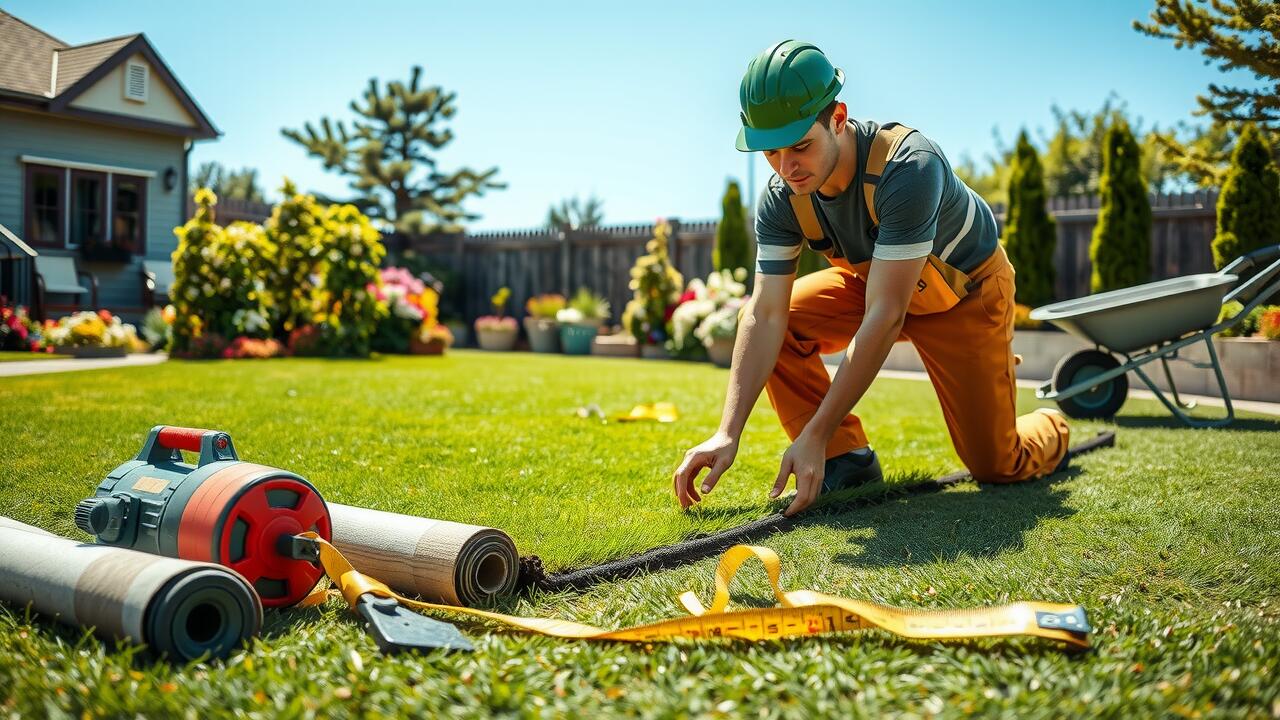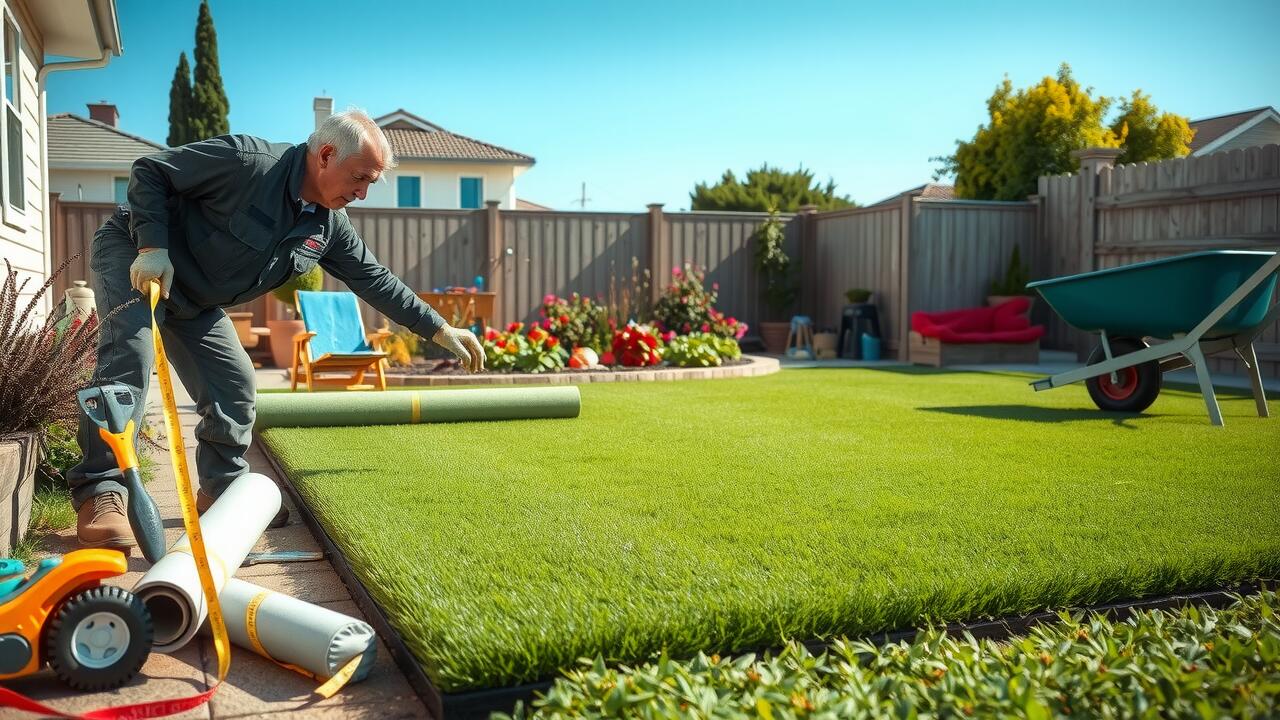
Environmental Impact
The environmental impact of turf and sod varies significantly, particularly in terms of resource requirements and ecosystem health. Turf installation generally requires fewer natural resources after the initial setup, as it is designed to withstand varying weather conditions and can reduce water usage once established. This can lead to lower carbon footprints in the long run, especially in regions where water scarcity is a concern.
Conversely, natural sod contributes positively to soil health and provides essential habitats for local wildlife. The growth of sod supports carbon sequestration and aids in maintaining biodiversity. While turf installation may minimize immediate maintenance needs, it cannot replicate the ecological benefits that a thriving sod lawn offers. Each option presents distinct advantages and disadvantages, affecting their overall environmental footprints.
Water Usage and Sustainability
Water usage is a critical factor in the discussion of sustainability between turf and sod. Natural grass requires regular watering, especially in warmer climates, which can lead to increased demand for water resources. Depending on the grass type, this often translates into significant irrigation efforts during dry spells. In contrast, turf typically requires less water for maintenance after initial installation. This lower demand can be particularly advantageous in areas where water conservation is a priority.
Turf installation also contributes to sustainability efforts in sports and recreational areas. Its resilience allows for reduced overall care, minimizing the need for fertilizers and pesticides that can harm local ecosystems. Additionally, synthetic surfaces do not require mowing, further decreasing fossil fuel use and air pollution. The longevity of turf systems means they can withstand wear and tear better than sod, reducing the frequency of replacements and the environmental footprint associated with sourcing and transporting grass.
Aesthetic Appeal
The aesthetic appeal of a landscape can significantly influence property value and enjoyment. Turf installation offers a consistently lush and green appearance that many homeowners find attractive. This synthetic solution maintains its vibrancy throughout varying weather conditions, ensuring a visually appealing yard year-round. The uniformity of artificial grass also creates a neat, manicured look, which can enhance the overall design of outdoor spaces.
Sod, on the other hand, provides a natural feel that many people still prefer. The texture and scent of freshly grown grass can evoke a sense of connection to nature. With sod, the variety of grass species available allows for customized choices based on climate and personal preference, contributing to a unique landscape. However, the visual appeal of sod can fluctuate during different seasons and weather events, impacting its overall aesthetic in comparison to turf.
Visual Differences Between Turf and Sod
The visual differences between turf and sod are significant and noticeable at first glance. Turf, often made from synthetic materials, provides a uniform green appearance that can resemble a perfectly manicured lawn. The blades of synthetic grass maintain their color and texture year-round, resisting the seasonal changes that typically affect natural lawns. Sod, on the other hand, presents a more organic look with variations in color and height that reflect its living nature. The irregular growth patterns and textures of natural grass can create a more natural aesthetic, although it may require more maintenance to achieve a pristine appearance.
Turf installation typically results in a smooth, consistent surface that can withstand heavy foot traffic without showing wear. It can also be designed to drain effectively, minimizing puddles and muddy spots in high-use areas. Conversely, sod will frequently require time and care to reach its full lush potential, especially in the initial growth stages after installation. While sod may provide a more authentic grass experience, it can take weeks to establish properly. Therefore, the visual outcome of each option will largely depend on the level of maintenance and environmental factors affecting growth.
Usage Scenarios
Turf is often the preferred choice for high-traffic areas such as sports fields or playgrounds. Its durability and ability to withstand heavy use make it practical for environments where grass may struggle to grow or maintain its appearance. Additionally, turf can provide a consistent playing surface year-round, eliminating the need for regular maintenance and re-seeding that comes with natural grass.
Sod, on the other hand, can be ideal for residential lawns and gardens where aesthetics are a priority. The natural look of sod offers a more traditional lawn appearance and can improve the overall landscape of a home. In scenarios where homeowners prioritize sustainability and environmental impact, sod presents an option that can be maintained with natural watering techniques and local climate considerations. Turf installation does provide long-term savings in maintenance but may lack the natural charm that many homeowners desire.
Best Applications for Each Option
Turf installation is ideal for high-traffic areas such as sports fields, playgrounds, and commercial landscapes. Its durability and resilience make it well-suited for spaces that experience heavy foot traffic. Additionally, turf provides a consistent playing surface, reducing the risk of injuries. Homeowners with busy lifestyles can also benefit from turf, as it requires minimal upkeep compared to natural grass.
Sod is often the preferred choice for residential lawns and gardens where a natural appearance is desired. It promotes biodiversity and can support local ecosystems. Additionally, sod provides a softer, more authentic feel underfoot, which is particularly appealing for families with children and pets. The natural aesthetic of sod can enhance the overall look of a property, making it an attractive option for homeowners focused on curb appeal.
FAQS
Is artificial turf more affordable than natural sod?
Generally, the initial cost of artificial turf can be higher than natural sod; however, when considering long-term maintenance costs, turf may prove to be cheaper over time.
What factors influence the cost comparison between turf and sod?
Factors include installation costs, maintenance expenses, water usage, and the longevity of the materials. Each option’s specific costs can vary based on individual circumstances and local market conditions.
Does turf require less water than sod?
Yes, artificial turf requires significantly less water than natural sod, which can lead to savings on water bills and a lower environmental impact.
How does the longevity of turf compare to that of sod?
Artificial turf typically lasts longer than natural sod, with a lifespan of 10-20 years or more, depending on usage and maintenance, while sod needs to be replaced every few years in some cases.
Are there any hidden costs associated with installing turf compared to sod?
Hidden costs may include potential site preparation, infill replacement for turf, and any necessary repairs over time. It’s essential to consider all potential expenses when making a decision between the two options.
